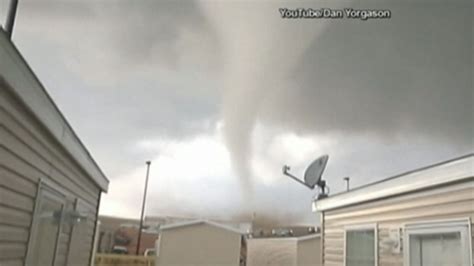
A year after the Air India Express flight 1344 crash in Kozhikode, India, which resulted in 21 fatalities, including both pilots, investigators are still working to determine the definitive cause, with pilot error, adverse weather conditions, and even remote possibilities like sabotage being examined. The official inquiry report, expected soon, will shed light on the contributing factors that led to the Boeing 737 overshooting the runway during a heavy monsoon landing on August 7, 2020.
The Air India Express flight IX 1344, operating from Dubai to Kozhikode, crashed while attempting to land at the Calicut International Airport (also known as Karipur Airport). The ill-fated flight was a repatriation flight under the Vande Bharat Mission, created to bring back Indian citizens stranded abroad due to the COVID-19 pandemic. The aircraft, a Boeing 737-800, registration VT-AXH, carrying 184 passengers, including 10 infants, and six crew members, approached the airport amidst challenging weather conditions characterized by heavy rainfall and poor visibility.
The landing was attempted on runway 10, which is known to have a tabletop design – a runway built on elevated terrain, presenting unique challenges for pilots, especially during adverse weather. The aircraft touched down beyond the designated touchdown zone, and despite the pilots’ efforts to abort the landing and initiate a go-around, the plane continued beyond the runway end safety area (RESA), plunging into a valley and breaking into two major sections.
The investigation into the crash has been multifaceted, involving the Aircraft Accident Investigation Bureau (AAIB) of India, along with support from Boeing, the aircraft manufacturer, and the Directorate General of Civil Aviation (DGCA), India’s aviation regulatory body. The cockpit voice recorder (CVR) and the flight data recorder (FDR) were recovered and analyzed, providing crucial insights into the final moments of the flight, the communication between the pilots, and the aircraft’s performance.
Several theories are being explored to understand the sequence of events that led to the tragic accident. These include, but are not limited to:
Pilot Error:
One of the primary areas of focus has been the role of the pilots in the accident. Pilot error, encompassing misjudgment, improper decision-making, or failure to adhere to standard operating procedures, is often a significant factor in aviation accidents. In the case of the Air India Express crash, investigators are examining several aspects of the pilots’ performance.
The CVR recordings have been meticulously analyzed to understand the communication and coordination between the pilots during the approach and landing. Investigators are assessing whether the pilots correctly interpreted the weather conditions, made appropriate decisions regarding the landing approach, and executed the landing maneuver as per established protocols. Any deviations from standard operating procedures, indications of fatigue, or miscommunication could point to pilot error as a contributing factor.
One critical aspect under scrutiny is the decision to continue with the landing attempt despite the adverse weather conditions. The prevailing heavy rainfall, poor visibility, and tailwind could have influenced the pilots’ decision-making process. The investigation is trying to determine whether the pilots should have initiated a go-around earlier or diverted to an alternate airport.
According to the original news source, “Investigators are looking at whether the pilots should have diverted to another airport or made another go-around attempt,” which clearly shows that the decision-making of pilots is under intense investigation.
Furthermore, the investigation also considers the pilots’ experience and training. Both pilots were experienced, but their familiarity with the specific challenges of landing at the Kozhikode airport, particularly in adverse weather conditions, is being assessed. The simulator training records and flight history of the pilots are being reviewed to determine whether they were adequately prepared for such scenarios.
Weather Conditions:
The weather at the time of the landing was undoubtedly a significant factor. The heavy monsoon rainfall, strong winds, and poor visibility created a challenging environment for the pilots. The investigation is analyzing the weather data, including wind speed, direction, rainfall intensity, and visibility, to understand how these factors might have contributed to the accident.
The presence of a tailwind, which pushes the aircraft forward during landing, is of particular concern. A tailwind increases the aircraft’s ground speed, making it more difficult to stop within the available runway length. The investigation is determining the exact tailwind component at the time of the landing and assessing its impact on the aircraft’s braking performance.
Furthermore, the phenomenon of hydroplaning, where a layer of water builds up between the tires and the runway surface, reducing braking effectiveness, is also being considered. The runway’s drainage characteristics and the aircraft’s tire condition are being examined to assess the likelihood of hydroplaning.
The report notes that the weather conditions were such that it was raining heavily with reduced visibility, and this will play a key role in the final assessment.
Runway Conditions:
The runway at Calicut International Airport has been a subject of scrutiny due to its tabletop design. Tabletop runways, characterized by steep drops at both ends, require precise landing and braking to avoid overshooting the runway.
The runway length and the available runway end safety area (RESA) are critical factors in determining the safety of landings. The RESA is designed to provide a buffer zone for aircraft that overshoot the runway, allowing them to decelerate safely. The investigation is assessing whether the RESA at Kozhikode airport was adequate to prevent the aircraft from plunging into the valley after overrunning the runway.
The condition of the runway surface, including its texture and grooving, which helps to improve braking performance, is also being examined. Any deficiencies in the runway surface could have contributed to the reduced braking effectiveness and the subsequent overrun.
Aircraft Condition and Maintenance:
The investigation is also exploring the possibility of any mechanical failures or maintenance issues that might have contributed to the accident. The aircraft’s maintenance records are being reviewed to identify any recurring problems or unresolved issues.
The condition of the aircraft’s engines, brakes, and other critical systems is being assessed to determine whether they were functioning properly at the time of the accident. Any malfunctions or failures in these systems could have impaired the aircraft’s ability to decelerate and stop within the available runway length.
Sabotage (Remote Possibility):
While less probable, the possibility of sabotage cannot be entirely ruled out until all other potential causes have been thoroughly investigated. Investigators are examining security protocols, crew backgrounds, and any other relevant information to assess the likelihood of sabotage. However, no evidence has surfaced to suggest sabotage.
“While remote, the possibility of sabotage will be explored,” confirms the original source, reiterating the need to look at all possibilities.
Systemic Failures:
Beyond the immediate factors related to the pilots, weather, runway, and aircraft, the investigation is also examining potential systemic failures within the airline or the regulatory framework. This includes assessing the airline’s training programs, safety management systems, and adherence to regulatory requirements.
The investigation is also looking at the oversight provided by the DGCA to ensure that the airline was operating safely and in compliance with all applicable regulations. Any lapses in oversight or deficiencies in the regulatory framework could have contributed to the accident.
The Air India Express crash has raised serious questions about aviation safety in India, particularly concerning the operation of flights in challenging weather conditions and the management of tabletop runways. The official inquiry report is expected to provide valuable recommendations for improving aviation safety and preventing similar accidents in the future.
The final report will be crucial in determining the specific causes of the accident and assigning responsibility. It is expected to include recommendations for improving pilot training, weather forecasting, runway safety, and regulatory oversight. The report’s findings will have significant implications for the aviation industry in India and beyond.
The Aftermath and Response:
Following the crash, rescue operations were immediately launched, involving local authorities, emergency services, and Air India personnel. The injured were rushed to nearby hospitals, and efforts were made to recover the remains of the deceased. The accident site was secured, and the investigation team began its work.
The Indian government announced compensation for the families of the deceased and the injured. Air India also provided assistance to the affected families. The accident triggered a nationwide outpouring of grief and concern, with many people calling for a thorough investigation and measures to improve aviation safety.
Impact on Aviation Safety:
The Air India Express crash has had a profound impact on aviation safety in India. It has prompted a re-evaluation of safety protocols, training programs, and regulatory oversight. The DGCA has taken several steps to enhance aviation safety, including stricter enforcement of regulations, improved training for pilots, and enhanced monitoring of airlines’ operations.
The accident has also highlighted the need for better weather forecasting and improved runway safety. Efforts are underway to upgrade weather monitoring systems at airports and to enhance the safety of tabletop runways. The recommendations from the official inquiry report are expected to further strengthen aviation safety in India.
Lessons Learned:
The Air India Express crash serves as a reminder of the inherent risks associated with aviation and the importance of maintaining the highest standards of safety. The accident underscores the need for continuous improvement in pilot training, weather forecasting, runway safety, and regulatory oversight.
The aviation industry must learn from this tragedy and take proactive steps to prevent similar accidents in the future. This includes investing in advanced technology, improving communication and coordination between pilots and air traffic controllers, and fostering a culture of safety throughout the aviation system.
The incident also highlights the importance of human factors in aviation safety. Fatigue, stress, and communication breakdowns can all contribute to accidents. The aviation industry must address these human factors through better training, improved working conditions, and enhanced safety management systems.
Ongoing Investigation and Future Steps:
As the investigation continues, the focus remains on gathering and analyzing all available evidence to determine the definitive cause of the crash. The official inquiry report is expected to be released soon, providing a comprehensive account of the accident and recommendations for preventing similar tragedies in the future.
The aviation industry, regulatory authorities, and airlines must work together to implement these recommendations and to ensure that aviation remains the safest mode of transportation. The memory of those who lost their lives in the Air India Express crash should serve as a constant reminder of the importance of aviation safety.
The crash prompted immediate safety reviews and recommendations. The Aircraft Accident Investigation Bureau (AAIB) and the Directorate General of Civil Aviation (DGCA) have been actively involved in reviewing safety protocols and procedures. This includes re-evaluating training modules for pilots, especially those pertaining to landing in adverse weather conditions and on tabletop runways.
Challenges of Tabletop Runways:
Tabletop runways, like the one at Kozhikode, present unique operational challenges. These runways are built on elevated terrain, with steep drops at either end. This design significantly reduces the margin for error during landings and takeoffs. Pilots must execute precise approaches and landings to avoid overshooting or undershooting the runway.
The lack of adequate Runway End Safety Areas (RESAs) at some tabletop airports is a major concern. RESAs are designed to provide a buffer zone for aircraft that overshoot the runway, allowing them to decelerate safely. However, at some tabletop airports, the RESAs are either too short or non-existent, increasing the risk of accidents.
The DGCA has issued guidelines for operating flights at tabletop airports, including stricter weather minima and enhanced training for pilots. However, concerns remain about the adequacy of these measures, and there have been calls for a comprehensive review of safety standards at tabletop airports.
Adverse Weather Operations:
Operating flights in adverse weather conditions, such as heavy rain, strong winds, and poor visibility, poses significant challenges to pilots. Reduced visibility can make it difficult for pilots to see the runway and other visual cues, while strong winds can affect the aircraft’s stability and control.
Heavy rain can also reduce braking effectiveness, increasing the risk of hydroplaning. Hydroplaning occurs when a layer of water builds up between the tires and the runway surface, causing the tires to lose contact with the runway. This can significantly reduce braking performance and make it difficult to stop the aircraft within the available runway length.
Pilots are trained to operate in adverse weather conditions, but the risks remain significant. The DGCA has established weather minima for landings and takeoffs, which specify the minimum visibility and wind conditions under which flights can be operated. However, these minima are not always sufficient to prevent accidents, particularly in extreme weather conditions.
Pilot Training and Decision-Making:
Pilot training plays a crucial role in aviation safety. Pilots must be adequately trained to handle a wide range of situations, including adverse weather conditions, mechanical failures, and emergencies. Training should include both classroom instruction and simulator training, which allows pilots to practice handling difficult situations in a safe and controlled environment.
Decision-making is also critical for pilots. Pilots must be able to quickly and accurately assess the situation and make appropriate decisions. This requires good judgment, situational awareness, and the ability to remain calm under pressure.
The Air India Express crash has highlighted the importance of pilot training and decision-making. The investigation is examining the pilots’ training records and their decision-making process in the moments leading up to the crash. Any deficiencies in their training or errors in judgment could have contributed to the accident.
Regulatory Oversight and Enforcement:
Regulatory oversight is essential to ensure that airlines operate safely and in compliance with all applicable regulations. The DGCA is responsible for overseeing the aviation industry in India, including licensing airlines, inspecting aircraft, and enforcing safety regulations.
Effective regulatory oversight requires a strong and independent regulatory agency with sufficient resources and expertise. The DGCA must be able to effectively monitor airlines’ operations and to take enforcement action when necessary.
The Air India Express crash has raised questions about the effectiveness of regulatory oversight in India. The investigation is examining the DGCA’s oversight of Air India Express to determine whether any lapses in oversight contributed to the accident.
Technological Advancements:
Technological advancements can play a significant role in improving aviation safety. Advanced navigation systems, such as GPS and satellite-based landing systems, can improve the accuracy of landings and reduce the risk of runway excursions.
Enhanced weather forecasting systems can provide pilots with more accurate and timely information about weather conditions, allowing them to make better decisions. Advanced braking systems, such as automatic braking systems and runway overrun protection systems, can help to prevent runway excursions.
The aviation industry should continue to invest in technological advancements to improve safety and to reduce the risk of accidents.
Communication and Coordination:
Effective communication and coordination are essential for aviation safety. Pilots must be able to communicate effectively with air traffic controllers, flight dispatchers, and other crew members. Air traffic controllers must be able to communicate effectively with pilots and to provide them with accurate and timely information.
Communication breakdowns can lead to misunderstandings and errors, which can increase the risk of accidents. The aviation industry should focus on improving communication and coordination to reduce the risk of accidents.
Culture of Safety:
A strong culture of safety is essential for aviation safety. A culture of safety is one in which all employees are committed to safety and are encouraged to report safety concerns without fear of reprisal.
Airlines should foster a culture of safety by providing training on safety procedures, encouraging employees to report safety concerns, and taking action to address safety hazards. The DGCA should promote a culture of safety by enforcing safety regulations and by providing guidance and support to airlines.
Conclusion:
The Air India Express crash was a tragic event that resulted in the loss of many lives. The investigation into the crash is ongoing, and the official inquiry report is expected to provide valuable recommendations for improving aviation safety.
The aviation industry, regulatory authorities, and airlines must work together to implement these recommendations and to ensure that aviation remains the safest mode of transportation. The memory of those who lost their lives in the Air India Express crash should serve as a constant reminder of the importance of aviation safety. The investigation aims to provide a comprehensive understanding of the factors that led to the crash and to prevent similar accidents in the future. This involves a thorough review of pilot performance, weather conditions, runway environment, aircraft maintenance, and systemic factors within the airline and regulatory framework. The ultimate goal is to enhance aviation safety standards and protocols to protect passengers and crew members on all flights.
Frequently Asked Questions (FAQ):
1. What caused the Air India Express flight 1344 crash in Kozhikode?
The definitive cause is still under investigation. Potential factors include pilot error, adverse weather conditions (heavy rain, tailwind, poor visibility), the tabletop runway design, aircraft condition, and, remotely, sabotage. The official inquiry report is expected to provide a comprehensive explanation.
2. What is a tabletop runway, and why is it considered more challenging?
A tabletop runway is built on elevated terrain with steep drops at both ends. This design leaves little margin for error during landing, as pilots must execute precise approaches to avoid overshooting or undershooting the runway. Adequate Runway End Safety Areas (RESAs) are crucial at these airports, but are sometimes lacking.
3. What role did the weather play in the crash?
Adverse weather, including heavy monsoon rainfall, strong tailwinds, and poor visibility, created challenging landing conditions. The tailwind increased the aircraft’s ground speed, making it harder to stop, while heavy rain may have contributed to hydroplaning, reducing braking effectiveness.
4. What safety measures have been implemented since the crash?
Safety reviews have been conducted, and the DGCA has re-evaluated pilot training, especially for adverse weather landings and tabletop runways. Stricter weather minima have been considered, and there are ongoing efforts to improve runway safety and upgrade weather monitoring systems at airports.
5. What is the significance of the cockpit voice recorder (CVR) and flight data recorder (FDR) in the investigation?
The CVR and FDR are crucial tools for investigators. The CVR provides insights into the communication between the pilots during the flight’s final moments, while the FDR records various flight parameters, such as speed, altitude, and engine performance. Analyzing these recordings helps reconstruct the events leading up to the crash and identify potential contributing factors.









